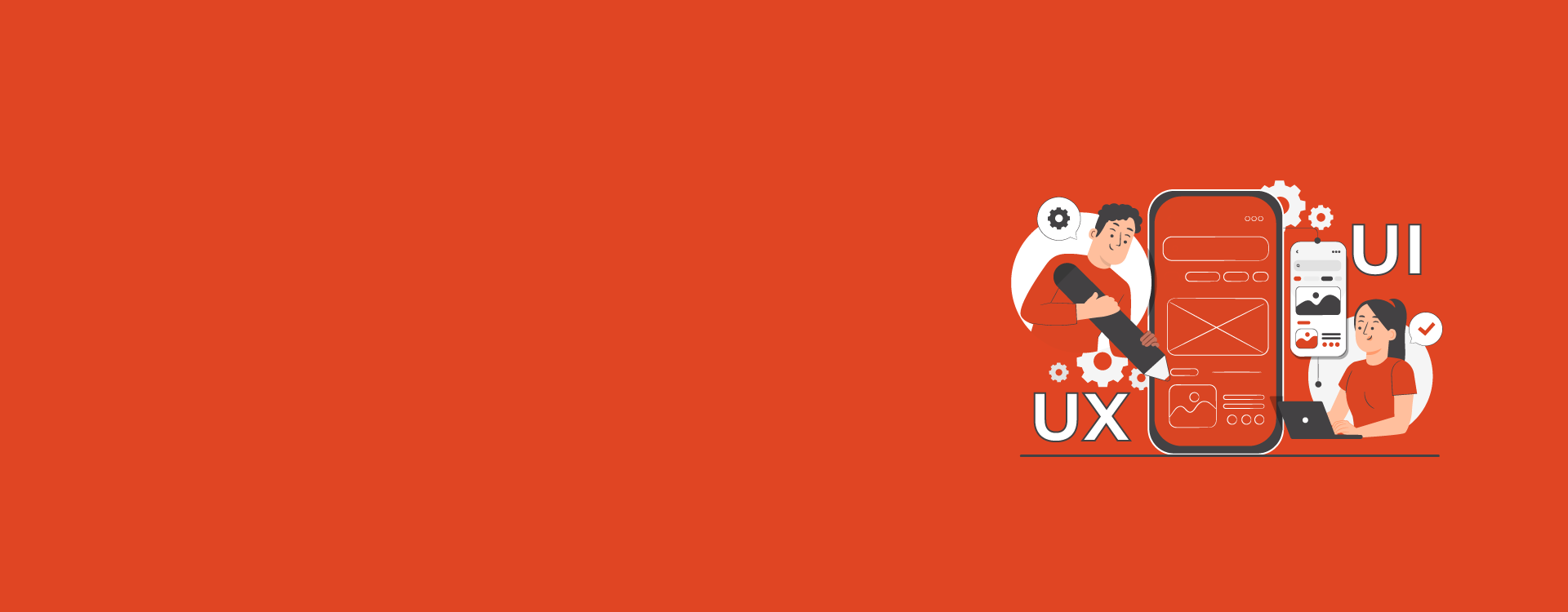Introduction to Trending UI/UX Designs
User interface and user experience design is the procedure for making digital products that give users the best possible interaction with such things. The design thinks about how people will use the product and works to make it intuitive, aesthetically pleasing, and useful. The end game is to make a thing that does what the customers want and helps the company succeed.
Why staying on top of UX and UI Design trends is Important
Designers must keep up with current UI/UX design trends to be competitive and produce products that match customers' expectations. Designers who are up-to-date on the newest trends increase the likelihood that their creations will be fresh, original, and easy to use. Designers can take inspiration from trends to innovate new features and concepts, resulting in a more satisfying product and user experience. Designers may stand out in a crowded market and win over more customers by keeping up with and applying the latest trends.
Preview of top trends covered in the blog post
In this article, we'll discuss the most critical UX and UI design trends for 2023. Dark mode as a default, voice user interfaces, augmented reality, 3D and interactive design, and tailored experiences are just some of the developments we'll be looking into. With this knowledge in hand, designers may produce cutting-edge items that are both interesting and simple to use, therefore satisfying customers.
1. Dark Mode Everywhere
Explanation: The UI design style known as "dark mode" employs a dark colour scheme for the user interface. The light design style, where white backgrounds and vibrant colours predominate, is the opposite of this design idea. The user interface can feel more sleek and contemporary because of the darker colour scheme, which helps readability and reduces eye strain. It's a terrific option for digital products because it's a well-liked design trend among users and creators.
Benefits: Designers and users alike gain from using dark mode. It eases eye strain for users and enhances sight in dimly lit areas. It gives designers more creative licence when choosing colour schemes and contrasts, making drawing attention to crucial information and improving user experience more straightforward. The dark mode can also extend battery life on devices with OLED or AMOLED screens, where black pixels don't require power. Finally, designers in UX Design Services can improve user experience by employing dark mode to produce more exciting and approachable user interfaces.
2. Immersive 3D Graphics
Explanation: Three-dimensional (3D) graphics is the term for the incorporation of visuals with an illusion of depth into computer-generated artwork. This is becoming more common in user interface and user experience design since it allows developers to provide consumers with more realistic and engaging interactions. Designers may improve the overall user experience by giving their goods more depth and visual appeal using 3D graphics.
Benefits: 3D realistic and immersive graphics offer many advantages. Users are more likely to connect with, spend more time with, and return to a product if it is engaging and aesthetically pleasing. In addition to allowing for greater freedom and flexibility in product creation, 3D graphics allow designers to build more complex and dynamic designs.
3. Voice Interface Design
Explanation: Voice interface design creates user interfaces (UIs) that enable people to control electronic devices by speaking to them. The tech lets people operate gadgets without a screen, button, or another physical interface. Users can instead issue commands verbally, and their device will reply by acting on them. Even though voice interface design has been around for a while, current speech recognition technology and AI developments have improved its accuracy and reliability.
Benefits: Accessibility and convenience are just two advantages of voice interface design. Voice recognition technology can be a helpful alternative for those with physical or mental limitations that make it tough to use a standard user interface.
Case Studies: Several corporations have already incorporated voice interface design into products, and this trend is expected to grow. For instance, Alexa, Amazon's voice assistant, may be used to play music, create reminders, purchase groceries, and operate smart home devices just by speaking to it. Comparable examples of voice interface design may be seen in Apple's Siri, Microsoft's Cortana, and Google's own Assistant.
4. Minimalistic Design
Explanation: Minimalism is a style of design that makes sparse but effective use of visual components like colour, shape, and texture. The goal is to make the design so simple that all attention is drawn to the core functions of the product. White space, straightforward text, and restrained colour and image use are hallmarks of this design ethos.
Benefits: Improved usability and aesthetics are the only two advantages that minimalist design may provide. Users will have an easier time navigating and finding the information they need on a site with a simple and uncluttered layout. In addition, a minimalist design can help a website or app load faster by eliminating extraneous components. Even more so, a company might benefit from standing out from the crowd with minimalistic designs.
5. Personalised User Experiences
Explanation: The importance of tailoring each user's experience is rising in user interface and user experience design. This movement emphasises customising the user experience based on data collected about the user's likes, dislikes, and interactions with the product or service. Data analysis and machine learning can be used to accomplish this goal.
Benefits: The tailored user experience has many advantages. Customers are more inclined to use a product or service and return if they are given a unique and personalised experience. Enhancing productivity and delight for the user are two additional ways customisation can enhance the overall experience.
Also Read: The Difference Between UX and UI Design – A Beginner's Guide
Key Takeaways
Recap of top UI/UX design trends for 2023
UI/UX design trends are constantly changing and improving to keep up with the rapid pace of technological development. In this article, we'll go over a few of the most noteworthy developments expected to occur in 2023. The development of voice-activated interfaces is interesting. This entails interacting with gadgets via speech recognition technology, allowing more organic and hands-free conversation with the help of a UX Design Company. In addition to making voice interfaces more accessible for people with mobility impairments, this also makes them more convenient for everyone else. We've already seen significant tech firms like Amazon and Google incorporate voice interface design into their products; other firms of this type will likely follow.
Encouragement to implement these trends in design work.
Designers must keep up with current UI/UX design trends to deliver the most excellent possible user experiences. Voice interface design, immersive 3D visuals, simple design, and tailored user experiences are just a few examples of how designers are taking advantage of current trends to make products that are more interesting, accessible, and user-friendly.





Leave a Comment